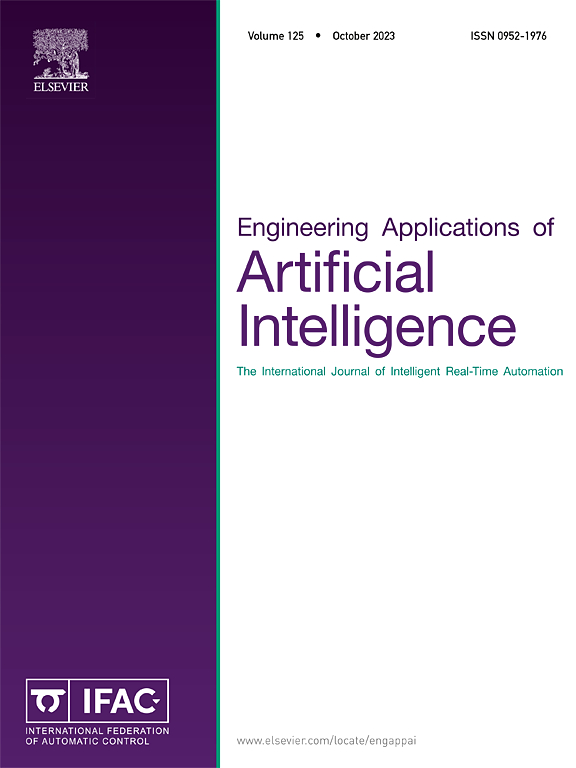ESRPCB:一种边缘引导的超分辨率模型和集成学习用于微小印刷电路板缺陷检测
IF 8
2区 计算机科学
Q1 AUTOMATION & CONTROL SYSTEMS
Engineering Applications of Artificial Intelligence
Pub Date : 2025-07-02
DOI:10.1016/j.engappai.2025.111547
引用次数: 0
摘要
印刷电路板(pcb)是现代电子产品中的关键部件,需要严格的质量控制以确保其正常功能。然而,由于捕获图像的低分辨率,导致缺陷和噪声之间的潜在混淆,小尺寸pcb图像中的缺陷检测面临重大挑战。为了克服这些挑战,本文提出了一种新的框架,称为ESRPCB(边缘引导超分辨率pcb缺陷检测),该框架将边缘引导超分辨率与集成学习相结合,以增强pcb缺陷检测。该框架利用边缘信息来指导具有新颖ResCat(残差拼接)结构的EDSR(增强型深度超分辨率)模型,使其能够从小型pcb输入重建高分辨率图像。通过结合边缘特征,超分辨率过程保留了关键的结构细节,确保在增强图像中仍然可以区分微小缺陷。在此基础上,建立了多模态缺陷检测模型,利用集成学习对超分辨图像进行分析,提高了缺陷识别的准确性。实验结果表明,与最先进的SOTA方法相比,ESRPCB具有优越的性能,平均峰值信噪比(PSNR)为30.54 dB(分贝),比EDSR高0.42dB。在缺陷检测方面,ESRPCB实现了0.965的mAP50(交叉口平均精度超过Union阈值0.50),比EDSR(0.905)和传统超分辨率模型高出5%以上。此外,基于集成的检测方法进一步提高了性能,实现了0.977的mAP50。这些结果突出了ESRPCB在提高图像质量和缺陷检测精度方面的有效性,特别是在具有挑战性的低分辨率场景下。本文章由计算机程序翻译,如有差异,请以英文原文为准。
ESRPCB: An edge guided super-Resolution model and ensemble learning for tiny Printed Circuit Board defect detection
Printed Circuit Boards (PCBs) are critical components in modern electronics, which require stringent quality control to ensure proper functionality. However, the detection of defects in small-scale PCBs images poses significant challenges as a result of the low resolution of the captured images, leading to potential confusion between defects and noise. To overcome these challenges, this paper proposes a novel framework, named ESRPCB (edge-guided super-resolution for PCBs defect detection), which combines edge-guided super-resolution with ensemble learning to enhance PCBs defect detection. The framework leverages the edge information to guide the EDSR (Enhanced Deep Super-Resolution) model with a novel ResCat (Residual Concatenation) structure, enabling it to reconstruct high-resolution images from small PCBs inputs. By incorporating edge features, the super-resolution process preserves critical structural details, ensuring that tiny defects remain distinguishable in the enhanced image. Following this, a multi-modal defect detection model employs ensemble learning to analyze the super-resolved image, improving the accuracy of defect identification. Experimental results demonstrate that ESRPCB achieves superior performance compared to State-of-the-Art (SOTA) methods, achieving an average Peak Signal to Noise Ratio (PSNR) of 30.54 , surpassing EDSR by . In defect detection, ESRPCB achieves a mAP50(mean average precision at an Intersection over Union threshold of 0.50) of 0.965, surpassing EDSR (0.905) and traditional super-resolution models by over 5%. Furthermore, the ensemble-based detection approach further enhances performance, achieving a mAP50 of 0.977. These results highlight the effectiveness of ESRPCB in enhancing both image quality and defect detection accuracy, particularly in challenging low-resolution scenarios.
求助全文
通过发布文献求助,成功后即可免费获取论文全文。
去求助
来源期刊

Engineering Applications of Artificial Intelligence
工程技术-工程:电子与电气
CiteScore
9.60
自引率
10.00%
发文量
505
审稿时长
68 days
期刊介绍:
Artificial Intelligence (AI) is pivotal in driving the fourth industrial revolution, witnessing remarkable advancements across various machine learning methodologies. AI techniques have become indispensable tools for practicing engineers, enabling them to tackle previously insurmountable challenges. Engineering Applications of Artificial Intelligence serves as a global platform for the swift dissemination of research elucidating the practical application of AI methods across all engineering disciplines. Submitted papers are expected to present novel aspects of AI utilized in real-world engineering applications, validated using publicly available datasets to ensure the replicability of research outcomes. Join us in exploring the transformative potential of AI in engineering.
 求助内容:
求助内容: 应助结果提醒方式:
应助结果提醒方式:


